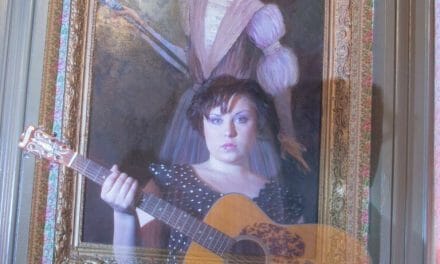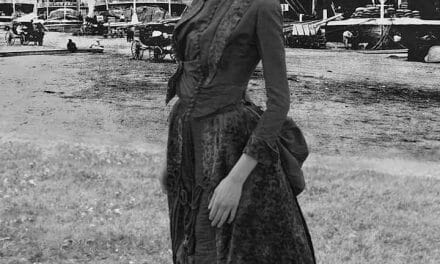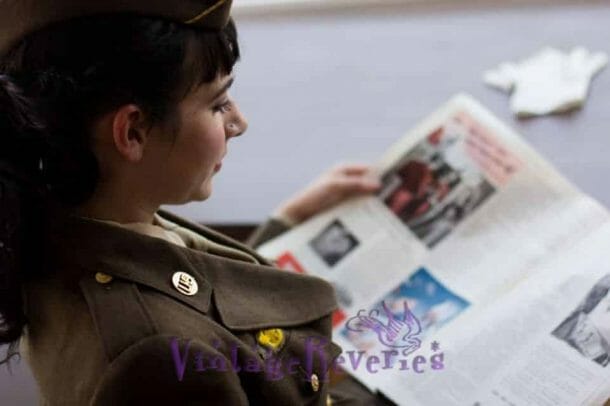
1880s tea gown and going away outfit

I almost forgot that I took these 1800s-inspired photos back in 2012. At that time, I was diving deep into my love for the Victorian era, not only as a period of immense cultural and societal evolution but also as an era rich with exquisite fashion details. These images showcase two stunning dresses, each capturing a unique part of the Victorian woman’s life and wardrobe: an 1880s-style tea gown and a poignant “going away” dress, both styled for a photoshoot that remains one of my favorites to this day.
Let’s start with the tea gown. Tea gowns became popular in the late 19th century, particularly among women of the upper and middle classes. They were informal garments designed to be worn at home, often during the fashionable ritual of tea time. Unlike the rigid corseted day dresses or bustled evening gowns that defined the era, tea gowns offered a much-needed respite. Looser silhouettes, flowing fabrics, and unstructured styles made the tea gown revolutionary—and radical for its time! These gowns symbolized the shifting role of women within the Victorian household. While still exceedingly elegant, they hinted at a more relaxed attitude within private settings, a glimpse of feminine comfort and autonomy.
The 1880s, in particular, saw the tea gown evolve as Parisian styles swept through England and America. The gown featured here embodies that era perfectly, with its flowing lines and romantic details. Although I wish we had a proper corset to perfect the authenticity, my petite model Tiffany managed to fit into it so beautifully that the final result was just magical. The rich textures of the fabric added incredible depth to the photos. Historically, many tea gowns were made from luxurious materials such as silk, velvet, or soft brocade, and this piece was no exception. It was heavy, with a slight upholstery-like quality, but retained a rich, silky sheen. Burgundy was a popular color choice in Victorian fashion, as it conveyed a sense of subdued opulence, perfect for intimate social gatherings.
Now, the second dress—a “going away dress”—stole the show entirely, as it carried with it a sense of profound history. This particular dress came with an attached note indicating it had belonged to a Miss Meroe, and it was the dress she wore as part of her bridal trousseau when she left for her honeymoon. The term “going away dress” defined a specific garment that a bride would wear at the conclusion of the wedding festivities as she departed with her new husband. Popularized in the mid-19th century and lasting well into the early 20th century, these dresses symbolized the transition from bridal splendor to the more understated role of wife and homemaker—a poignant marker of both excitement and duty.
Victorian brides were deeply influenced by Queen Victoria herself, who, in 1840, had famously worn a white gown for her royal wedding to Prince Albert. This trend trickled down through society, inspiring both bridal and post-wedding fashion. However, while white was often reserved for wedding gowns, going away dresses allowed for a bit more creativity. Commonly, they came in deep jewel tones or earthy palettes, signaling sophistication and practicality. Miss Meroe’s dress is a fine example of this tradition. The material again is lush—almost upholstery-like—but the burgundy hue and sheen make it truly unforgettable. I spent a considerable amount of time capturing its details, from the fabric’s intricate texture to the subtle yet elegant lines of the skirt, which hint at the bustle silhouette so iconic of the 1880s.
Tiffany, as the model, really brought these pieces to life. With her striking features and ability to channel the mood of the era, she seemed to inhabit the garments effortlessly. I have to admit, though, that this shoot became a bit of an experiment in over-editing on my part—I was in my “gum-bichromate effect” phase, layering multiple textures and levels of clarity to make the photos feel almost like aged relics. (If you want to experiment with this effect, you can download it yourself on DeviantArt!) While I might have gone a touch overboard, I still believe these photos hold a special beauty, evoking the romance and grandeur of the late Victorian era.
The shoot took place in a simple studio setting, but the details of the dresses and Tiffany’s emotive expressions brought each frame to life. The tea gown radiated the grace of a casual Victorian afternoon, whereas the going away dress suggested hope and excitement for new beginnings. I even shot some video footage of this shoot, hoping to capture the way the heavy fabrics moved as Tiffany posed. Outside the studio, I also took some additional exterior shots with the dresses—and, honestly, I loved how natural the details appeared with little editing. The burgundy color, in particular, seemed to glow in natural light, underscoring just how striking these garments must have been in their day.
The Victorian era is incredibly fascinating not just for its strict societal conventions, but for how those conventions translated into fashion. Every garment told a story or symbolized something; nothing was arbitrary. Tea gowns, for example, offered a softer side of femininity and reflected growing ideas of leisure, individualism, and a woman’s personal time. Going away dresses, on the other hand, encapsulated the ideals of marriage, respectability, and the start of a new chapter, connecting the bride to her future family and role.
Reflecting on this shoot ten years later, it’s hard not to feel nostalgic. I treasure these gorgeous Victorian-inspired pieces, and even if I had to shoot them today, I wouldn’t change much. The fabrics, the colors, and their stories speak for themselves. I hope these images inspire you to look deeper into the fascinating world of 19th-century fashion—it truly is an era worth exploring.







































You must be logged in to post a comment.